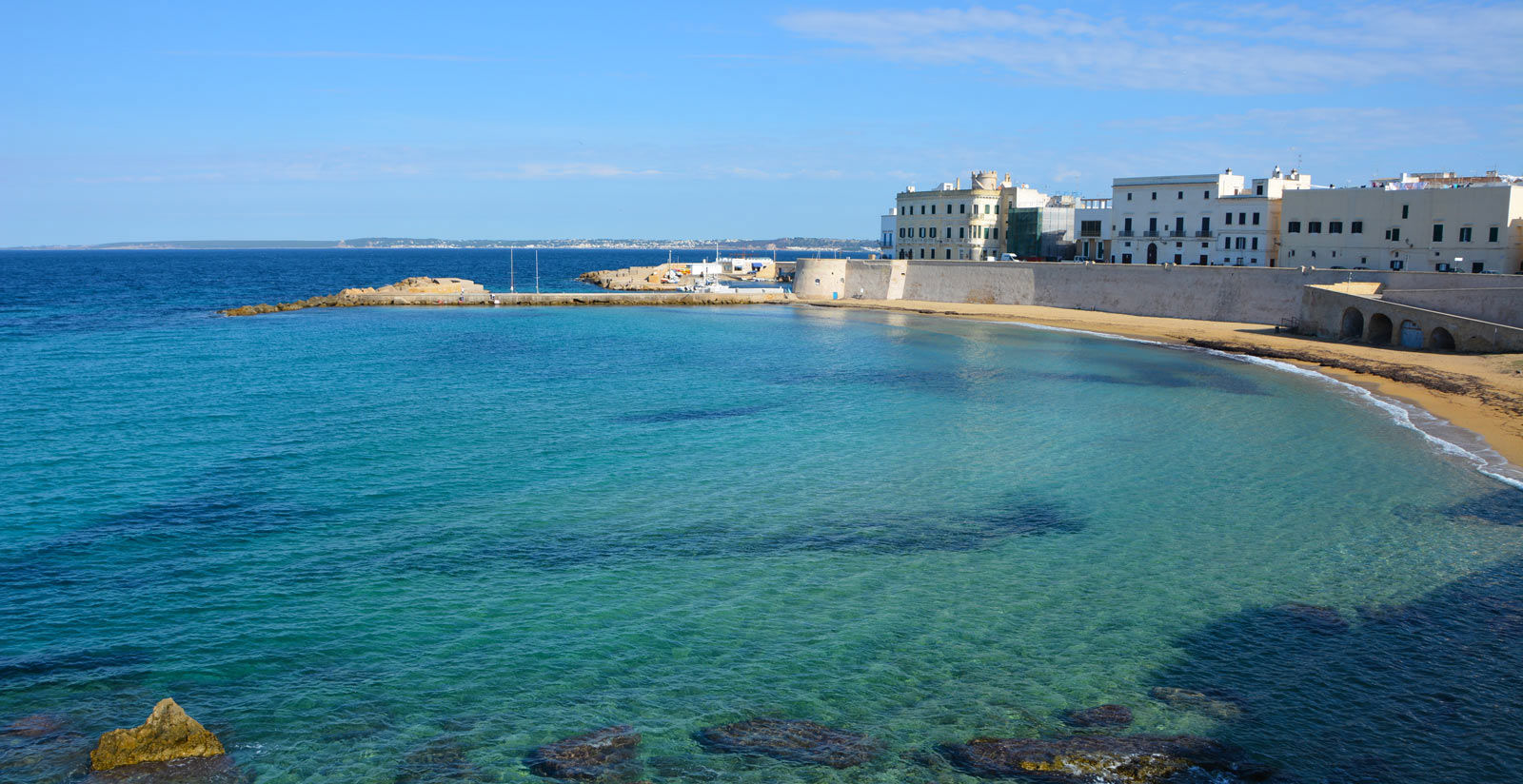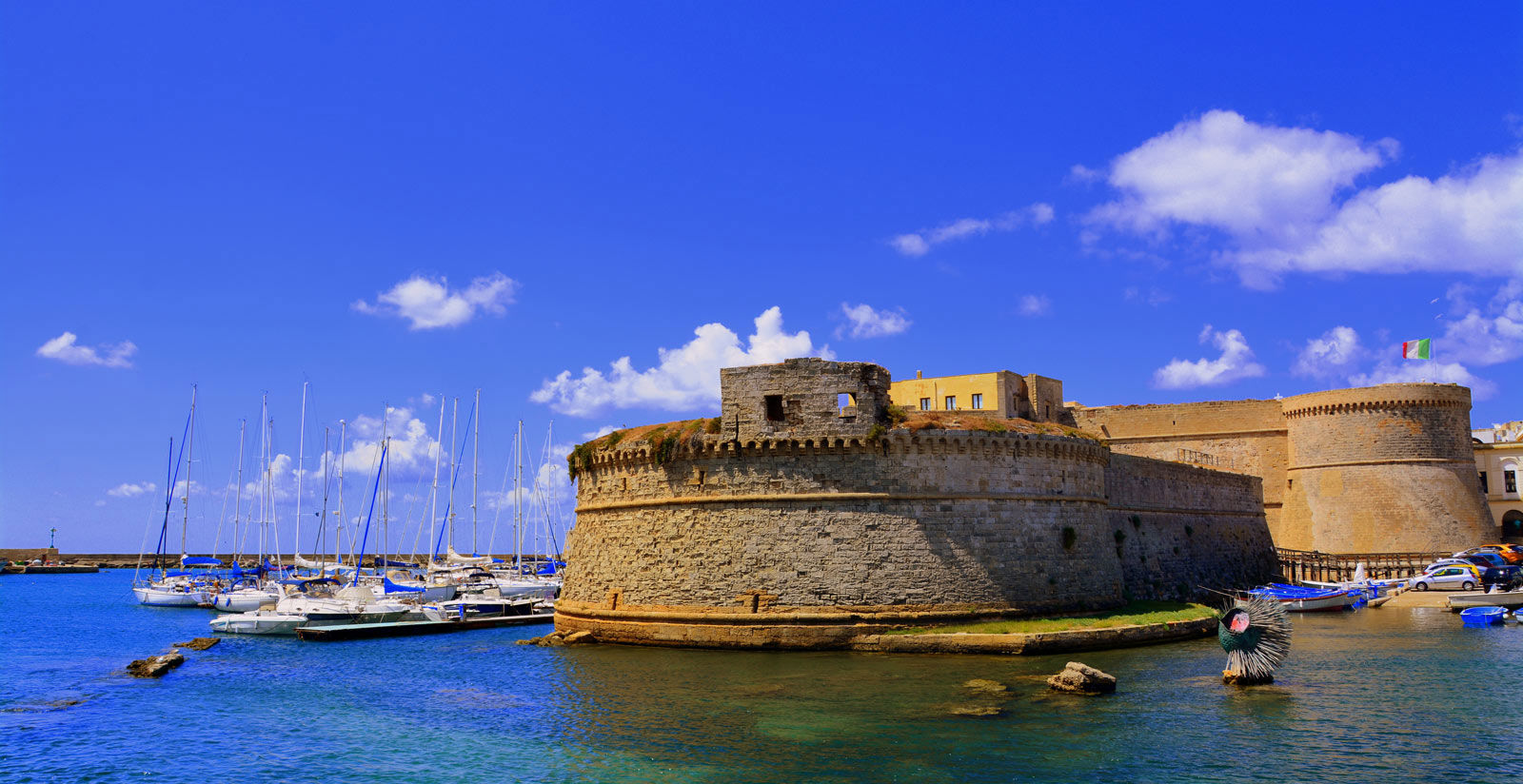Gallipoli
amidst history and places worth visiting
Let us take you on an exploration of one of the most beautiful seaside towns in the Salento: Gallipoli!
For a few years now, Gallipoli has become the favourite destination of tourists choosing the Salento for their summer holidays. It is a town of beach clubs, events, bars and clubs, and it hosts families, couples and groups of tourists, young and old alike, who choose Gallipoli as their base when staying in the Salento.
Yet Gallipoli is not merely a tourist destination for having fun. Gallipoli is also a town with a long and fascinating history behind it. It is a town rich in culture that recounts and passes down traditions that speak of the Salento and the Apulia region as a whole.
A Brief History
Let’s start with the name: Gallipoli derives from kalé pólis, a name it was given by colonisers who originally came from Greece. Appropriately, it means beautiful city.
The town’s more recent history starts with its conquest by the Romans, who created the town’s transport networks, such as the link between Gallipoli and the Via Traiana, which ensured quick passage to the Balkans.
After its occupation by the Barbarians and the short-lived Byzantine rule, Gallipoli was rebuilt during the Eastern Roman Empire, when the town and its defensive walls were fortified.
Later, after the Norman occupation of Gallipoli and the Salento, and the town falling under the dominion of several states for a brief time, Gallipoli came under Spanish rule. During this period, artisan activities, such as the trade of lamp oil, flourished.
In the Bourbon period, the town’s port was built and Gallipoli became the capital of the district. With the unification of Italy, the town became the capital of the surrounding area, along with Lecce and Taranto.
What to see in Gallipoli
Below you will find a selection of the most beautiful places to visit in the ‘beautiful city’:
Gallipoli Castle
One of the most important castles in the Salento, Gallipoli Castle is a magnificent fortress perched on the sea that marks the entrance to the old town. Its construction is Byzantine in origin, while the fortifications appear to date back to the Angevin period. Even today, the tower still houses the original catapults and cannons used to defend the town.
Sant’Agata Cathedral
This basilica dates back to the 17th century and was built in the place of an old Romanesque church. The statue of Sant’Agata, the church’s namesake, stands out on the external façade, which is adorned by decorations and other stone statues. The interior, on the other hand, is distinguished by the baroque-style high altar.
The Greek fountain
This just may be the oldest fountain in Italy, according to many, and probably dates back to the III century BC. The fountain can be found close to the port and Gallipoli Castle and is undoubtedly an interesting monument to visit if you are passing through Gallipoli.
We’ve given you a limited selection! We’ll finish up with a few other suggestions. We encourage you to get lost in the viuzze – narrow streets – of the old town centre so you can discover the details of the ancient buildings. Or why not stroll around the old fish market and try some delicious traditional fare, washed down with a good glass of wine? And, last but not least, relax and enjoy a day on the beach at one of the many lidos and beach clubs spread along the coast.
What more could you ask for?


